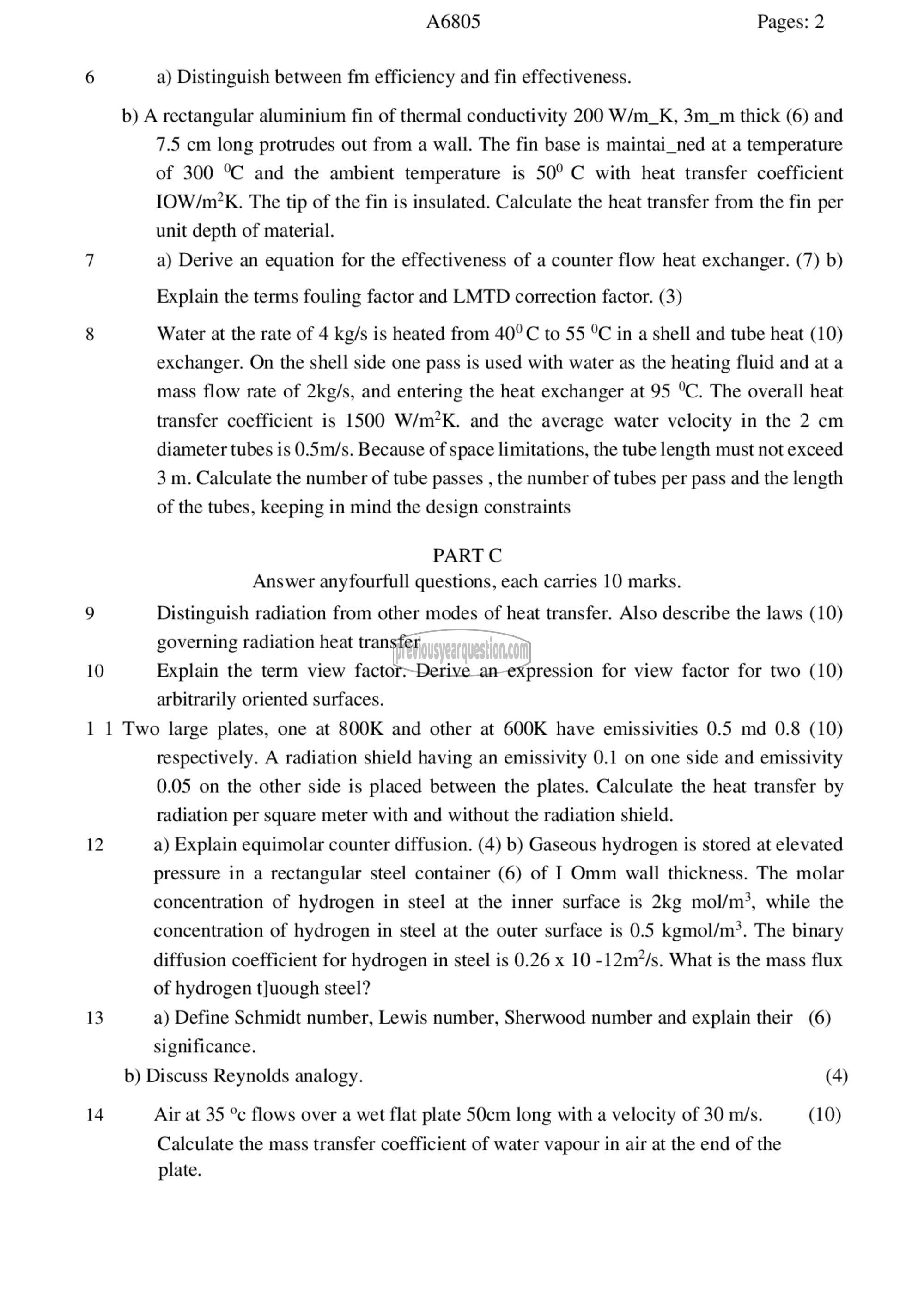APJ ABDUL KALAM TECHNOLOGICAL UNIVERSITY Previous Years Question Paper & Answer
Semester : SEMESTER 6
Subject : Heat & Mass Transfer
Year : 2018
Term : APRIL
Branch : MECHANICAL ENGINEERING
Scheme : 2015 Full Time
Course Code : ME 302
Page:2
A6805 Pages: 2
6 a) Distinguish between fm efficiency and fin effectiveness.
b) A rectangular aluminium fin of thermal conductivity 200 W/m_K, 3m_m thick (6) and
7.5 cm long protrudes out from a wall. The fin base is maintai_ned at a temperature
of 300 °C and the ambient temperature is 50° C with heat transfer coefficient
IOW/n°K. The tip of the fin is insulated. Calculate the heat transfer from the fin per
unit depth of material.
7 a) Derive an equation for the effectiveness of a counter flow heat exchanger. (7) b)
Explain the terms fouling factor and LMTD correction factor. (3)
8 Water at the rate of 4 kg/s is heated from 40°C to 55 °C in a shell and tube heat (10)
exchanger. On the shell side one pass is used with water as the heating fluid and at a
mass flow rate of 2kg/s, and entering the heat exchanger at 95 °C. The overall heat
transfer coefficient is 1500 W/m?K. and the average water velocity in the 2 cm
diameter tubes is 0.5m/s. Because of space limitations, the tube length must not exceed
3 m. Calculate the number of tube passes , the number of tubes per pass and the length
of the tubes, keeping in mind the design constraints
PART ^
Answer anyfourfull questions, each carries 10 marks.
9 Distinguish radiation from other modes of heat transfer. Also describe the laws (10)
governing radiation heat transfer
10 Explain the term view factor. Derive an expression for view factor for two (10)
arbitrarily oriented surfaces.
1 1 Two large plates, one at 800K and other at 600K have emissivities 0.5 md 0.8 (10)
respectively. A radiation shield having an emissivity 0.1 on one side and emissivity
0.05 on the other side is placed between the plates. Calculate the heat transfer by
radiation per square meter with and without the radiation shield.
12 a) Explain equimolar counter diffusion. (4) b) Gaseous hydrogen is stored at elevated
pressure in a rectangular steel container (6) of I Omm wall thickness. The molar
concentration of hydrogen in steel at the inner surface is 2kg mol/m*, while the
concentration of hydrogen in steel at the outer surface is 0.5 kgmol/m?. The binary
diffusion coefficient for hydrogen in steel is 0.26 x 10 -12m?/s. What is the mass flux
of hydrogen t]uough steel?
13 a) Define Schmidt number, Lewis number, Sherwood number and explain their (6)
significance.
b) Discuss Reynolds analogy. (4)
14 Air at 35 °c flows over a wet flat plate 50cm long with a velocity of 30 m/s. (10)
Calculate the mass transfer coefficient of water vapour in air at the end of the
plate.
